School History
The following is an excerpt from The Springfield & Franconia Times, January 31, 1973, by Barbara Lovelace:
To some Franconia residents this brief history is a familiar part of their lives. Those who are new to the Springfield-Franconia area might like to go back to the year 1872. During the year of 1872, Franconia saw its first public school built. The school was the second house before the railroad bridge. The house still stands on the original spot and looks exactly as it did at the time with the exception of the picture window in the front. Originally the school was gray and is now painted green. Boys at that time used to play ball on the west side of the house in the potato patch...
You cannot mention the history of Franconia Elementary School without including the name of Higham. Mrs. Kathie Higham, who has lived in Franconia since 1916, owned the property on which the school stands. In 1916, Mr. and Mrs. Higham bought a farm with about 50 acres and moved into the white farmhouse. The Higham's called their farm "Twin Oaks" and their home was located four doors up from the school on Franconia Road. In 1931, while Mr. Woodson was superintendent of Fairfax County Public Schools, Mrs. Higham sold about two acres of her farm to Fairfax County and the school started as a four-room schoolhouse with an auditorium. Fairfax County later purchased two more acres for the playground. When school was dedicated on January 29, 1932, the students numbered 114. Building additions have been made to the school in 1938, 1948, 1953, and 1956. The end of 1972 saw the completion of a new wing housing office, library, and classrooms.
What's in a Name?
Should our name be spelled Franconia or Frankhonia? Learn about the origin of our school's name in this video.
The First School
The first Franconia School, described above by Barbara Lovelace, was located on present day Old Franconia Road. The building was torn down several decades ago. Its location is shown on the following map of Fairfax County drawn in 1878. Pictured on the right is the Franconia School, circa 1930, when the building was still in use as a schoolhouse.
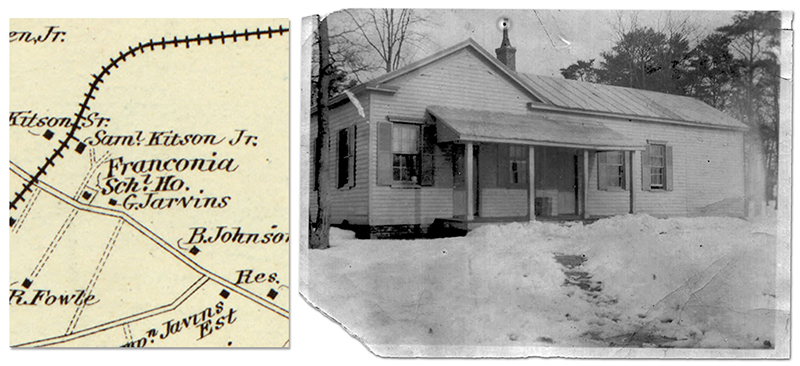
Franconia Elementary School opened at its current location on February 1, 1932. Our school initially had four classrooms and an auditorium. The building, with the exception of the plumbing and heating plant, was constructed by the Industrial Engineering and Construction Company of Washington, D.C., for $14,382.
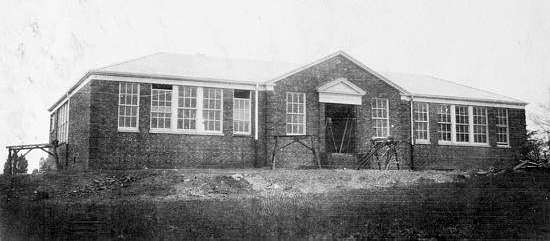
Our school opened in the midst of the Great Depression. On September 5, 1933, the Fairfax County School Board applied for financial aid from the Federal Emergency Administration of Public Works (PWA) for a grant of $10,000 to construct the first addition to our school. The following photograph was taken before the first addition was constructed.
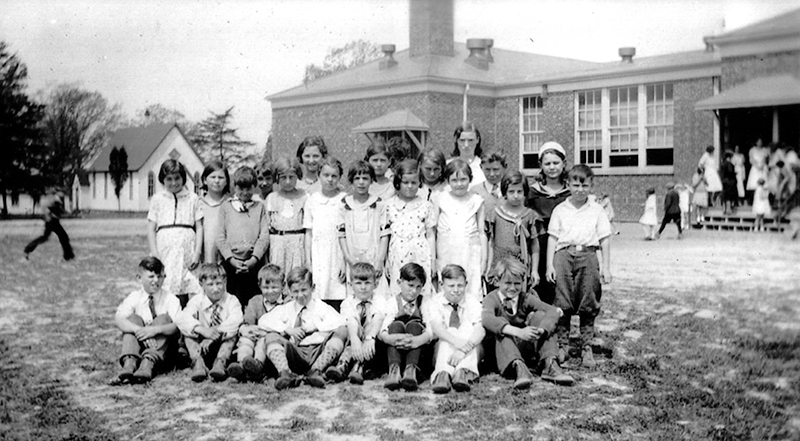
Hot Soup
The original building had no cafeteria so everyone brought their own lunch to school. However, many families struggled to provide their children with decent lunches because they couldn’t afford to buy food. This was long before the days of free and reduced-price meals, and it wasn’t until President Franklin D. Roosevelt was inaugurated in 1933 and his New Deal program went into effect that relief came to these families. Alvin Dennis, a student at Franconia Elementary during this time, recalled that local farmers and parents would donate vegetables and the mothers of students would volunteer to prepare a hot soup that was served at lunchtime.
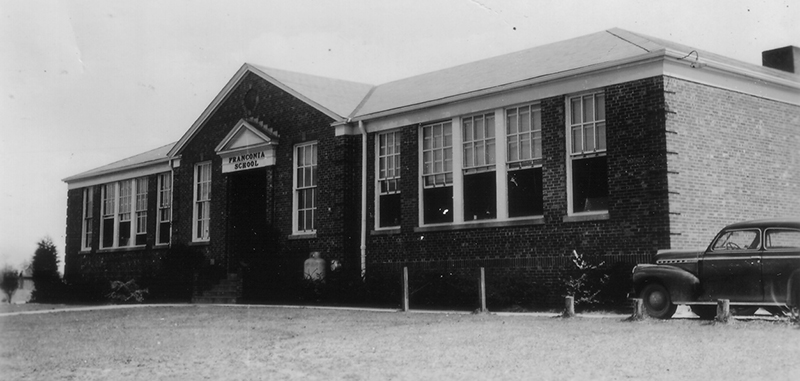
The Baby Boom
World War II and the growth of the Federal Government had a profound effect on Fairfax County and its public school system. The period of population growth that followed the war is known as the baby boom. In September 1950, there were 16,163 children enrolled in Fairfax County Public Schools (FCPS). By September 1960 that number would climb to 59,870.
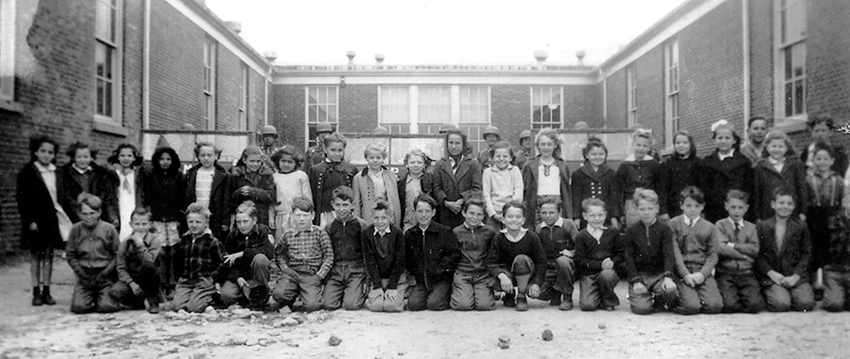
As the school-age population steadily rose, the few FCPS schools in operation at that time quickly became overcrowded. The strain on classroom space at Franconia Elementary School was tremendous. Four classrooms were housed at the Franconia Fire Station, three more classrooms were held in portable buildings called Quonset huts, and two classrooms were held in a makeshift, tarpaper-covered wooden shack. These, plus eleven classrooms in Franconia Elementary, accommodated 762 children in 1952.
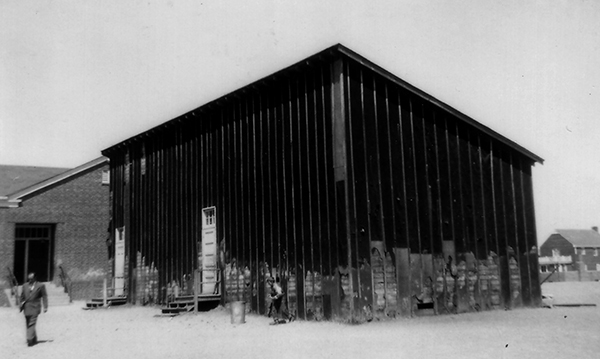
New Schools
Some relief in class size finally came with the opening of Bush Hill, Cameron, and Garfield elementary schools in 1953 and 1954. Several additions to Franconia Elementary School were constructed during the baby boom era, in 1948, 1953, and 1956.
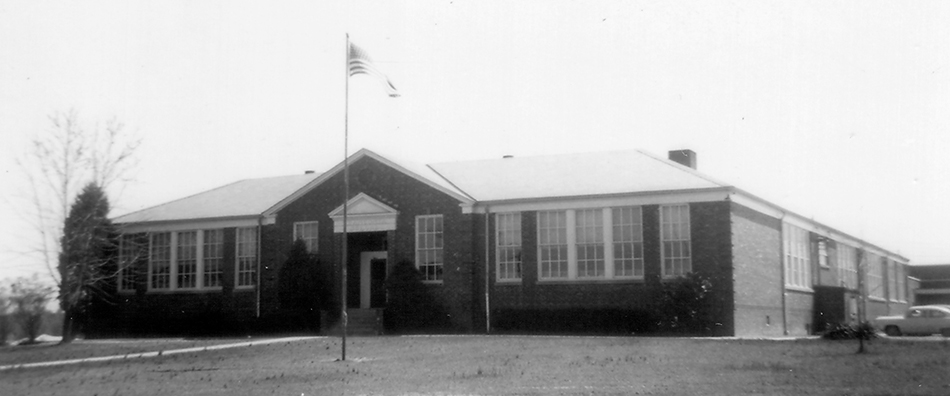
Integration
The next major change to come to Franconia Elementary School happened in the early 1960s. When Franconia opened, public schools in Virginia were segregated by race. African-American children living in our area originally attended Laurel Grove, a one-room schoolhouse that still stands today on Beulah Road. After Laurel Grove closed, the children were bussed to schools at Gum Springs on Route 1. All racially segregated public schools in Fairfax County were closed at the end of the 1965-66 school year, marking the beginnings of the ethnically and culturally diverse Franconia school community we know today.
Explore the evolution of our school in this series of aerial photographs courtesy of Fairfax County's GIS & Mapping Services.
A New Look
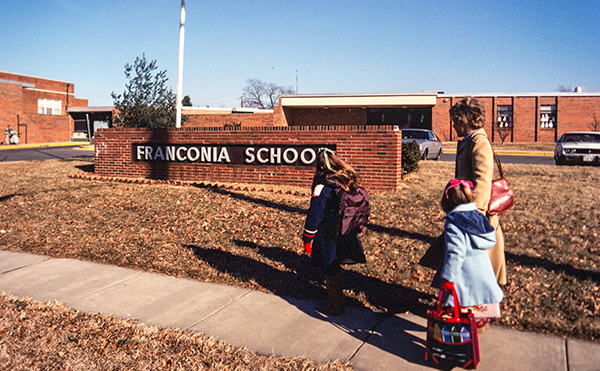
The next classroom additions to our school were constructed in 1971 and 1986. During our most recent renovation, the original 1932 portion of Franconia Elementary was torn down and new classrooms were constructed in its place. The façade facing Franconia Road was designed to pay homage to the look of the original building.





